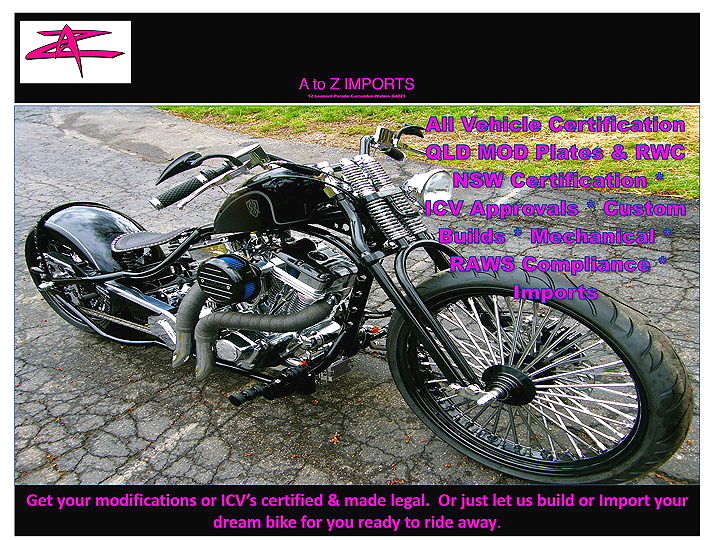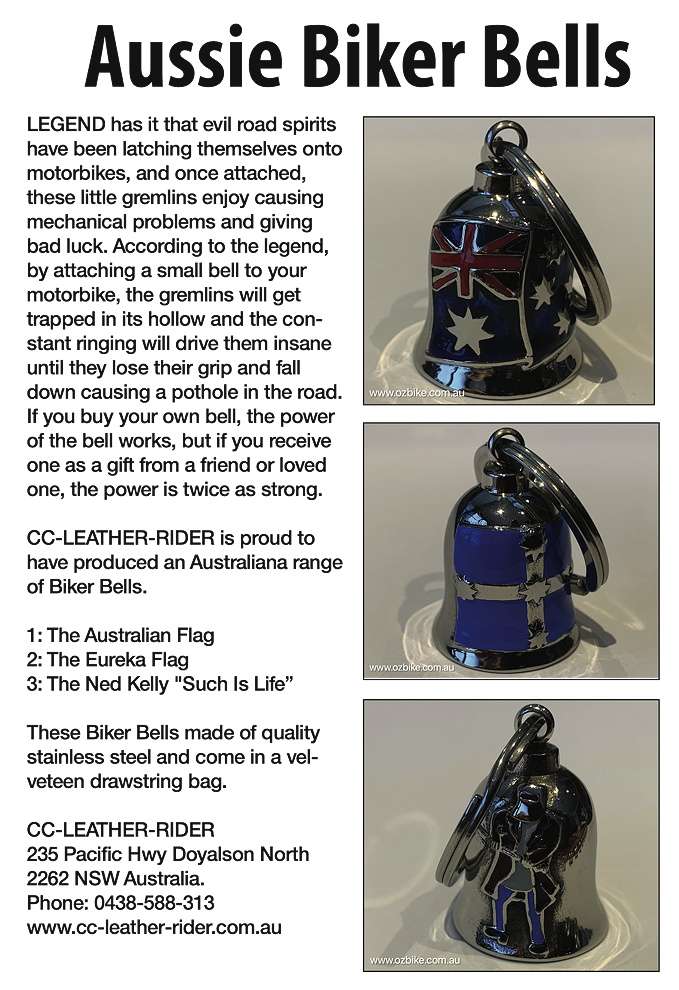Turbocharged Yamaha Skull Bobber
“I started pulling bits off it and wasn’t worried about appearance; I knew it was going to be ugly. It was about performance…” said Dave.

ORIGINALLY it started out as a stock standard XJ650 Turbo Yamaha 1982 model but at some point somebody had the idea of doing a restoration job on it. They pulled every nut and bolt of the bike apart and kind of pieced it back together but nothing worked anymore. It sat in a mate’s shed for a good 20 years that I could remember.
Anyway, I had the inclination one day to build a custom bike for myself… because I paint these sort of things for other people, I thought I’d build one for myself. I thought, ‘What’s going to be different?” and being a Yamaha enthusiast, I remembered this Turbo and asked my mate if he’d sell it to me. He said I could have it if I could make it go, so that’s what I did.
In its day, it was turbocharged. I don’t know how many they made, but not many. Back in the early to mid 1980s all the Japanese manufacturers were in a bit of a performance war, trying to outdo each others. Suzuki, Kawasaki, Yamaha — they all brought out a turbocharged motorcycle. Suzuki had a rotary turbo and Kawasaki had their own turbo. Everyone’s worked differently and this was the Yamaha version.
After I finished my apprenticeship as a spray-painter, I quickly worked out that people wanted motorcycles painted. There used to be an old guy called Toby Hall down Daws Road in Adelaide and he was the man who was fixing everyone’s motorcycles if they crashed. I’d started getting into it in the 1980s and thought I might be cutting his mustard a bit, so I went down and met the guy and he was quite happy for me to take over, and I had a lot of good years painting motorcycles.
I was probably the biggest motorcycle painter in Adelaide through that period, and then I guess people just worked out that, ‘Hey, I’m a spray-painter and I’m artistic, I could do that too.’ So all sorts of other guys started popping up and now they’re everywhere. And good luck to them — it’s great.
I used to do everything but then I started to specialise. Japanese bikes are a lot of hard work to do a restoration on; Ducatis are mainly red but the owners like a perfect paint job. I started specialising in Ducatis and custom Harleys, and did some custom cars like my own ZA Ford Fairlane as well.
When I got this bike, it looked original but had only been pieced together. I let it sit in the corner of the workshop for about 12 months, just constantly working on other people’s jobs but always looking at it and thinking, ‘Where and how do I start on that thing?’ Then one day it just came to me, it was never going to be a restoration project in the true sense of the word. A restoration, yeah, but not back to original. I started pulling bits off it and wasn’t worried about appearance; I knew it was going to be ugly. It was about performance, cutting off as much weight as possible to make the bike, ultimately, quicker.


I don’t believe it needed the faring to cut through the wind, that’s not going to make a big difference to the speed, but by cutting it off I gained a better power-to-weight ratio. So I just cut everything off it that didn’t need: the front mud guard, the faring, the seat, the shock absorbers, the exhaust system, most of the electrical system.
Most of the electrics were just needed for things like indicators, hand-warmers on the bars and things like that so I took them off. There’s no actual key for the ignition system. You turn it on, hit the ignition button and it’ll fire. If somebody wants to steal it, good luck to them.
I just continually looked at every aspect of it, trying to cut every bit of weight off. Then it came down to needing a seat and I didn’t want the standard bob-look with the sprung seat mounts; everyone does that. I wanted something a bit different, with the seat lower and the only way I could think of doing that was with hard rubber mount oscillator blocks. And it works beautifully; it’s sweet; it’s nice to ride down the road.


The spikes were just a look that I thought would be cool; they come from wine bottle toppers. I threaded them into bits of rubber and then tightened them; very easy to put on and very easy to make a sharp custom look.
It was really easy to remove the suspension because it’s shaft drive. I could simply lower the arse end as much as I wanted and then make the struts for where I wanted it to sit.
I got rid of the tacho. What’s the point? You know when the thing’s peaking out on high RPM; you can hear it. I didn’t see the point for a speedo either because you’re going to be breaking the law.
When they built the bike it had a full fibreglass tank and seat structure that clipped on over the top of the petrol tank that was purely a fuel cell with a gauge in it. I’ve just kept it as a fuel cell with no fibreglass.
People wanted to buy the wheels because only the Turbo came out with these particular wheels on it. They’re good looking wheels.
The headlight is blanked off halfway through. I’m still trying to figure out exactly what’s going on there but it’s got something to do with WW2; all the military vehicles used to be like that so you could run at night and planes couldn’t see you from above. It doesn’t make any difference at all to the light output.


On the standard bikes, there used to be a lot of exhaust. I honestly don’t understand why, I think it was basically for looks, but when you’ve got a turbocharged motorcycle, you don’t need mufflers. This bike runs without a muffler and it’s still quite quiet.
There’s new Wiseco pistons, new rings, I’ve over-bored it, and put in new fuel pumps.
An old German guy in Melbourne rebuilt the turbocharger unit itself; I found him on the net while I was looking for the best people to do work; he was good but I can’t remember his name. The thing goes like a rocket.
I’m still running the original 1982 tyres on it. I pulled them off and scrubbed them with steel wool to make them look okay. They’re slippery but they’ve still got tread and they look cool.
There’s nothing available at all by way of spare parts any more; you’ve got to go to wreckers. You can buy parts for 30-year-old motorcycles but not motorcycles like this.


The skull is sort of my trademark. If you look closely it’s on the rear struts, the swing-arm, the frame, on the forks, the headlight, everywhere. But you’ve got to look for it.
Yamaha used to market the bike with an advert: here’s the good looking young fella with his Porsche 911 Turbo, but I’ve got something quicker, a high performance motorcycle. And when they came to a planet in Battlestar Galactica and had to ride around it. With the faring and stuff, they looked like they came off a space ship. They were silver from the factory so they looked perfect.
It’s cool; it handles great. Even though it’s become a rigid motorcycle now, the ride’s not unlike that of a new R6 because the R6 has such hard suspension this thing’s seriously not that far off it.
The whole idea was to drag race the bike. A Saturday night drag bike. There’s nothing I’d need to do, it’s all ready to go — all it needs is a drag strip.

photos by Chris Randells; words by Dave Bullis.


